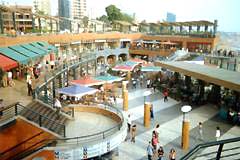Coming and going . . . and my new blog.

As longtime readers of this blog may have noticed, frequent moves are a hallmark of the Jesuit novitiate experience. After two years in which I've been frequently on the go, in the next stage of Jesuit formation I expect to be relatively stationary. This week I start First Studies in philosophy and theology at Fordham University, which will be my base for the next three years. Though First Studies does include occasional travel - particularly during the summer, which scholastics typically spend brushing up on languages or doing some kind of apostolic work - for the most part I expect to stay put in New York. I've enjoyed the diverse experiences of the novitiate, but I'm also looking forward to being in one place for a while.
Over the past week, I've been completing one final burst of travel before the start of orientation at Fordham. The day after vows, I headed east from Detroit in a rental truck packed with most of my earthly goods as well as those of the other Chicago and Detroit vovendi who'll be studying in the Bronx. I stayed over Monday night at McQuaid Jesuit High School in Rochester, New York, where I was hosted by the Chicago Province's own Father Bernie McAniff. A Rochester native, Bernie provided a fine tour of his hometown. Though I'm rather partial to my own Rochester, I was also very impressed with Bernie's - after all, it's one of the few cities I've visited that has a waterfall downtown. On Tuesday afternoon, I made it to Bronx and dropped off my cargo at Ciszek Hall, the Jesuit scholastic house at Fordham. After a night at Ciszek, I was on the move again on Wednesday as I caught a train to Providence, Rhode Island en route to my family home in Massachusetts. At the end of the week, I spent a couple days at Portsmouth Abbey, where I made a short retreat before entering the Jesuits. Returning to Portsmouth seemed a nice way to bookend my novitiate experience, and I appreciated the opportunity to spend some time in prayerful reflection and to renew my acquaintance with the Benedictine monks who make their home at the abbey. I spent this past weekend at home with the folks. As this home visit winds up, I find myself wishing I had more time here, as always. At the same time, however, I'm grateful for the time I've had.
I'm also grateful for the ways in which this blog has enhanced my experience of the novitiate. Originally intended as a means of keeping my family and friend posted on my current activities and whereabouts, Novitiate Notes has also become something of an apostolate for me. Blogging has been rewarding for me on an apostolic as well as a personal level, and I hope to keep it up. As I transition into life as a vowed Jesuit scholastic and as a student of philosophy, I'm starting a new blog, dubbed The City and the World. (Please note that the blog's name and its URL are different - as much as I like the name I chose for my new blog, I thought something shorter and snappier - something like "Jesuit Joe" - would make the URL easier to remember.) While I intend to keep Novitiate Notes online, I won't be posting any updates after today. If you want to know what I'm up to now, check out The City and the World. Thank you for being (virtual) companions on my journey through the novitiate, and please know of my prayers and good wishes. AMDG.




